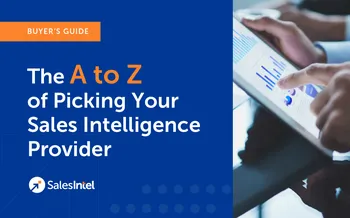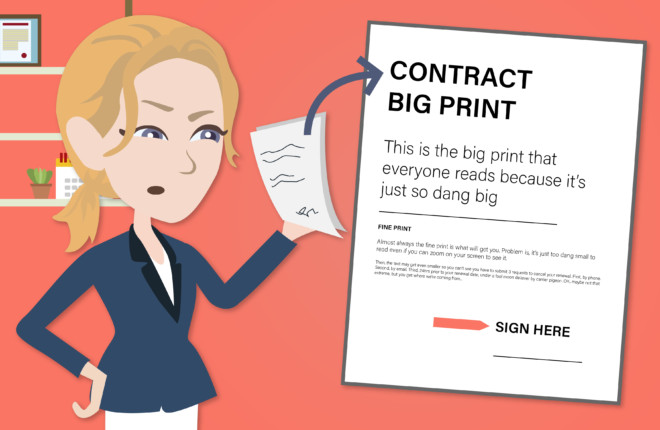If you’re searching for a comprehensive solution for prospecting and maintaining a contact database for your growing business, you may have encountered ZoomInfo. This well-known platform is used by companies of all sizes to equip sales teams with lead-generation tools, a vast pool of business contacts, and analytics to support successful outreach campaigns.
But, their pricing model can be a little confusing to understand.
Here, we will explore ZoomInfo’s pricing and plans to help you determine whether the investment is worthwhile for your business needs.
Let’s see how much ZoomInfo costs for what you need.
What is ZoomInfo’s Pricing?
To obtain the full information on ZoomInfo’s pricing, you will need to schedule a call with their sales team and undergo a discovery process. ZoomInfo does not provide pricing details on its website.
New ZoomInfo credits packages start at $14,995 a year with a minimum two-year agreement. You can see three pricing options mentioned on ZoomInfo’s website based on personas. Unless you spring for the most expensive plan possible, you will face several limitations for your team’s data usage.
What Packages Does ZoomInfo Offer?
1. ZoomInfo SalesOS
This is their core platform for sales prospecting and company/contact intelligence.
Key Features:
- Access to B2B contact & company data
- Direct-dial phone numbers and verified emails
- Org charts & buying committee mapping
- CRM & Outreach/Sales engagement integrations
- Search filters for targeting specific companies and personas
Who uses it: SDR teams, AEs, growth teams.

Source: ZoomInfo website
2. ZoomInfo MarketingOS
This is designed for demand generation and marketing teams.
Key Features:
- Account-level intent data to identify who is researching your product category
- Target audience building
- Campaign activation for display ads, social ads, and ABM
- Website visitor identification
Who uses it: Digital marketing, demand gen, ABM teams.
3. ZoomInfo TalentOS
Used for recruiting & headhunting.
Key Features:
- Candidate database filtering by skills, job function, industry, company size, etc.
- Talent sourcing workflows
- Integration with ATS & HR tools
Who uses it: Talent acquisition teams, recruiters.
Additional Add-On Modules
ZoomInfo separates several features into optional paid add-ons, including:
How ZoomInfo Calculates Your Quote
Your final cost depends on:
| Factor | How it Impacts the Quote |
|---|---|
| Number of user seats | More seats = higher cost. |
| Contact export/data usage volume | Higher usage = higher tier. |
| Whether you need intent data | Intent is usually a premium add-on. |
| Regions you need data for | Global + local data costs more than US-only. |
| Contract duration | Typically annual commitments. Multi-year may reduce cost. |
In Simple Terms
ZoomInfo sells:
- A core platform (SalesOS, MarketingOS, or TalentOS)
- Then charges more based on how many people use it + how much data you consume + which intelligence add-ons you include:
How Much Does ZoomInfo Cost Monthly?
Monthly Cost: ZoomInfo does not offer monthly subscriptions; all plans are billed annually. If broken down monthly:
- Pricing is quote-based (customised per client) and not publicly listed on a fixed tier.
- It commonly starts around US $1,250 per month.
How Much Does ZoomInfo Cost Yearly?
- It starts at around US $25,000 per year for smaller teams.
What is the ZoomInfo Cost per Contact?
It is challenging to calculate the exact cost per contact. However, it can range from $0.60 to $1.00 per contact depending on the bulk credits purchased.
How to Calculate ZoomInfo Pricing?
The pricing for ZoomInfo depends on several factors:
- Number of Users: More users typically mean higher costs.
- Features Required: Additional features like intent data, advanced integrations, and enrichment tools increase the cost.
- Number of Credits: Bulk purchasing credits can reduce the per-contact cost.
ZoomInfo Pricing Limitations:
Limitation 1: Limited Credits
ZoomInfo credits can be limiting for cross-functional teams. First, you get a fixed number of credits (up to 5000) after spending upward of $15,000 a year. Plus, you must spend another $10,000 for additional data. Considering the smaller data cap and limited credits, this may not be the best value-for-money option for your team.
Limitation 2: Department-Focused Package
ZoomInfo offers different packages for the sales, marketing, and HR/recruitment departments. The strategy behind this is clear – you spend more to get more. If you want buyer intent data then you have to get the marketing package, but having direct dial numbers comes with the sales package. If you want both you’ll be paying extra. However, with rising data quality concerns, people are looking for ZoomInfo alternatives rather than following the spend more to get more approach.
Limitation 3: The Price is Inversely Proportional to Value for the Customer
You are paying for access to a massive database, and likely paying extra for the types of data you need such as direct dial numbers and buying intent data. But, the more you pay the less relevant data you are receiving. You only need data for your ideal clients and target industries, but you’re paying for millions more data points that will never be useful for you.
Over time, you can likely expect your price to increase without any improvement in relevant data contacts for you or data quality. By having such a large database, correcting data decay is a long and difficult process. The actionable data you need is more likely to become outdated.
If you are a user of ZoomInfo, consider closely evaluating your changes in ZoomInfo pricing and data quality to determine whether the service continues to meet your needs and expectations. You may also consider alternative providers or strategies for obtaining B2B account and contact data.
What Determines ZoomInfo’s Pricing?
With a wide range of offerings, the pricing structure of ZoomInfo can exhibit significant fluctuations based on individual requirements. While this flexible approach accommodates businesses of diverse scales, comprehending all associated expenses can prove challenging. However, several pivotal factors tend to determine the costs of ZoomInfo’s suite of tools and functionalities. These factors encompass the specific features and functionalities utilized, the desired quantity of licenses, and the requisite volume of credits.
ZoomInfo boasts an extensive selection of remarkable supplementary features, which we will go over. Nevertheless, it is imperative to grasp that these add-ons will increase your monthly expenditures. Let us delve into the spectrum of plans proffered by SalesOS, highlighting the components encompassed within each plan alongside popular supplementary offerings.
ZoomInfo Addons
ZoomInfo separates several features into optional paid add-ons, including:
| Add-On | What It Does |
|---|---|
| Intent Data | Shows companies currently researching your category/products. |
| Enrich | Automatically updates and cleans CRM/contact records. |
| Scoops (Signals) | Provides news-based buying triggers like leadership hires, funding, layoffs, etc. |
| Engage | A sales engagement tool for email sequences and calling. |
| Chat | Website chatbot tied to ZoomInfo’s data to identify visitors. |
| OperationsOS / Data Pipelines | Bulk enrichment and data syncing to CRMs/data warehouses. |
Apart from the three primary SalesOS plans, ZoomInfo offers several additional features at an extra cost. To understand how these add-ons will affect your monthly or annual expenses, it’s best to contact the sales team directly.
These supplementary features encompass various options such as enhanced communication tools, premium support packages, and automation capabilities.
One noteworthy add-on is Chorus, which employs artificial intelligence to analyze trends and furnish real-time feedback and advice for interactions with potential clients.
Additionally, the chat feature, previously mentioned, deserves highlighting once more. This robust add-on can automate several routine sales tasks, facilitating a smoother progression of prospects through the sales funnel and affording more time for your sales team.
Furthermore, the Engage add-on automates sales outreach efforts, enabling you to identify and engage with potential buyers on a larger scale.
Is ZoomInfo’s pricing appropriate for individual prospecting?
ZoomInfo’s pricing structure isn’t tailored for individual prospectors or budget-conscious companies. They do not provide single licenses. The entry-level pricing of ZoomInfo might exceed the budgets of many small and medium-sized businesses (SMBs), and midsize businesses could find it challenging to justify the return on investment.
If you’re looking for enhanced customer support, ZoomInfo offers three levels depending on your needs. There is a free version, as well as paid versions, with greatly expanded features and support options.
Opportunity Restriction Due to ZoomInfo’s Limited Credits Model
ZoomInfo is a powerful tool that provides businesses with access to a vast amount of data about their target audience. However, the platform’s limited credit model may restrict some businesses from taking full advantage of the opportunities it offers.
ZoomInfo’s credits-based model allows users to access a certain number of contacts or companies within a specific time frame, with additional credits available for purchase. While this model may work for smaller businesses, it can pose challenges for rapidly growing organizations and larger enterprises or those with a high volume of leads.
One of the main restrictions of ZoomInfo’s credit model is that it can limit the number of opportunities a business can pursue. While offering a massive database, the credit system limits how fast you can grow your company. For example, a company may be interested in pursuing leads in a new industry, but if they have exhausted their credits maintaining their current pipeline, they may miss out on potential opportunities. This can be especially problematic for businesses with aggressive growth goals or those in highly competitive markets where every lead counts.
Another challenge with ZoomInfo’s credit system is that it can restrict the ability of sales teams to prioritize their efforts. With a limited number of credits, sales reps may have to choose which leads to pursue or be unable to create multi-threaded conversations with different decision makers and influencers at a target account This can lead to missed opportunities and lower conversion rates, which can impact a company’s bottom line.
Additionally, the limited credit model can make it difficult for businesses to conduct comprehensive market research. With a finite number of credits, companies may be forced to prioritize certain markets or industries over others, potentially missing out on valuable insights. This can be especially problematic for businesses looking to expand into new markets or launch new products, as they may not have access to the full picture of their target audience. Market testing is difficult because you don’t want to waste your credits if it doesn’t work out.
Finally, the limited credit model can be costly for businesses with high volume needs. While additional credits can be purchased, the cost can quickly add up. Credits added on after hitting your limit frequently cost a higher rate than the initial batch. This can lead to budget constraints and force businesses to make difficult decisions about where to allocate their resources.
In short, limited B2B data credits can restrict revenue opportunities by limiting access to potential customers, providing incomplete or outdated information, restricting in-depth analysis, and increasing costs.
Cross-Departmental Challenges Due to Limited Credits
Limited credits can pose several challenges for sales and marketing departments within an organization. Some of these challenges include:
- Reduced reach: Limited credits can make it difficult for sales and marketing teams to reach their target audience effectively. For example, if there are limited funds for advertising, the marketing team may need help to reach potential customers, which could impact sales.
- Inability to experiment: Limited credits can make it challenging for sales and marketing teams to experiment with new strategies or channels. This can lead to missed opportunities for growth and innovation.
- Disruption to sales-marketing harmony: The marketing team sometimes needs more credits than the sales team, and the sales team doesn’t have enough credits to hit quota.
- Inadequate data analysis: Limited credits can also impact the ability of sales and marketing teams to analyze and interpret data effectively. For example, if there are limited resources for data analysis, it may be challenging to identify trends and insights that can inform strategy.
- Reduced collaboration: Limited credits can create silos between sales and marketing departments, as each department may compete for limited resources. This can result in a lack of collaboration and communication between teams, which can further impact the organization’s overall performance.
- Decreased ROI: Limited credits can also impact the return on investment (ROI) for sales and marketing initiatives. With limited funds, it may be challenging to execute campaigns effectively, resulting in lower sales and revenue.
- Choosing between enrichment versus new leads: Do you use your credits to enrich and keep up companies in your current pipeline or CRM? Or, do you pursue brand-new contacts? Being limited by credits can make it difficult to do both and force teams to choose between their old data being reliable or finding new leads.
SalesIntel’s Unlimited Credits
SalesIntel is revolutionizing what B2B companies should expect from go-to-market intelligence solutions by simplifying their pricing: one plan with unlimited account and contact data.
Unlimited means unrestricted access to the millions of account and contact data points available – including account firmographics, account technographics, news/alerts data, contact data, and more. You never have to worry about running out of credits again. If you can see it, you can use it.
Our pricing is based only on the number of users. We give you access to unlimited data including downloads, exports, email addresses, mobile phone numbers, account firmographics, account technographics, and data enrichment. You also get access to our RevDriver+ Chrome extension, Bombora’s buyer intent data, and our Research on Demand team. You can look at SalesIntel as a one-stop platform for all your go-to-market needs.
One platform fee for all your go-to-market needs. See what’s included.
Comparing SalesIntel with ZoomInfo
With ZoomInfo (and our other competitors), you pay for credits and then use those credits to access email addresses and phone numbers, export that data to your CRM or marketing automation platform, and keep your data enriched. Marketing is worried about not having enough credits for campaigns, sales is worried about not having enough credits to effectively prospect, and RevOps is scared there won’t be enough credits to keep all this data clean.
At SalesIntel, you never have to worry about credits because everything is included – all the email addresses, mobile phone numbers, account firmographics, account technographics, downloads, exports, integrations, web visitor insights, and enrichment your teams need
Benefits of SalesIntel’s Unlimited Credits Across Departments – What’s In It for Me?
SalesIntel’s Unlimited Credits for Marketing:
- Routinely analyze and update your ICP using unlimited account data credits, downloads, and exports.
- Freely test new ideas and new markets without exposing yourself to additional costs from your B2B data provider.
- Leverage all the data you can to inform your paid ad strategy and help better define targets.
- Move, enrich, and append data across systems without fear of “the data destroy clause” or concerns about cost.
- Show maximum ROI to your CEO and CFO for the investment made in the marketing tech stack.
SalesIntel’s Unlimited Credits for Sales and Business Development:
Unlimited B2B data credits can provide significant advantages for sales reps working in a business-to-business (B2B) sales environment.
- Access detailed data about potential customers, such as company information, industry trends, and purchasing history.
- Never have to pick and choose between high-value prospects and stop worrying about making informed sales decisions.
- Enable sales reps to collaborate more effectively with colleagues and share valuable insights and information across teams and tools.
- No limit on the amount of prospecting you can do or worrying about overages when trying to hit quota.
- Unlimited access to direct dials without any extra cost to reach your contacts faster.
- Benefits of both enrichment and quality new leads to avoid incorrect records and data decay which can slow down the sales process.
SalesIntel’s Unlimited Credits for Demand Generation:
With access to unlimited B2B data, VP Marketing can develop and execute targeted marketing campaigns that are informed by deep insights into customer behavior and preferences.
- Optimize your campaign outreach with our unmatched B2B sales intelligence to accelerate conversion rates and exceed your marketing goals.
- Create predictable pipeline growth by always having access to the number of leads you need to hit your targets.
- Increase sales pipeline growth without going over budget or requiring additional spending on data management.
- No competition over who gets to use data credits to hit their goals first. Everyone has access to the same data as needed.
- Build your Ideal Customer Profile (ICP) and fully pursue it.
SalesIntel’s Unlimited Credits for Strategic Leadership:
Unlimited data access means you are never punished for your success or limited in your discovery. Sales leadership can experiment, capitalize on success, and grow pipeline without worrying about data usage.
- Access to unlimited data enables informed decisions about sales strategies and prioritizing high-value opportunities.
- Identify market trends and forecast demand to adjust sales tactics accordingly.
- Track customer satisfaction and engagement to improve retention rates and increase revenue.
- Always be able to pursue ICP accounts and use buyer intent data to prioritize your leads most likely to close.
- Experiment with targeting new industries or new roles at accounts without additional data purchases.
- Keep the pipeline continuously fed with high-quality data throughout your sales stack.
SalesIntel’s Unlimited Credits for RevOps:
Unlimited B2B data access can provide significant benefits for a RevOps by letting enriched, accurate data flow wherever throughout your tech stack and define your ICP:
- Gain deeper insights into sales performance, customer behavior, and market trends to identify new revenue opportunities, optimize sales processes, and make data-driven decisions.
- Streamline processes and workflows, reducing manual data entry and improving data accuracy.
- Collaborate effectively with your go-to-market team and avoid fighting over resources.
- Continuously optimize processes, workflows, and revenue performance.
- Activate and automate data processes to increase the speed of your sales pipeline.
- Optimize your data and revenue operations with SalesIntel’s unmatched data quality to maintain your B2B database at peak actionability and avoid data decay.
- Stop worrying about “data destroy” clauses and mixing provider and company data.
FAQs
Is ZoomInfo free or paid?
ZoomInfo is a paid platform and does not offer a full free version. Limited trial access may be available, but full functionality requires an annual subscription.
What are alternatives to ZoomInfo?
Alternatives include SalesIntel, Apollo.io, Lusha, Seamless.AI, and Clearbit. Each varies in accuracy, data refresh frequency, support quality, and pricing flexibility. SalesIntel stands out for offering human-verified data and unlimited usage options.
What factors influence ZoomInfo’s pricing?
ZoomInfo pricing depends on the number of user seats, feature modules selected, and the volume of credits needed. Add-ons like intent data or enrichment, as well as contract terms, also impact the final cost.
What is ZoomInfo’s pricing for single users or small teams?
ZoomInfo does offer plans for small teams, but they are still structured around annual contracts and credit-based usage. For individuals or very small operations, cost and credit limits may feel restrictive compared to more flexible alternatives.
How do ZoomInfo Credits work?
ZoomInfo uses a credit system for unlocking data. Every contact or record exported deducts credits. Once credits are depleted, additional credits must be purchased or usage must wait until the next cycle.
Are there additional costs or extra fees with ZoomInfo?
Extra fees can apply when you exceed credit limits, need additional data types, or add more features after contracting. Confirming usage terms and add-ons is important before signing.
How does SalesIntel pricing work?
SalesIntel pricing starts with a platform fee that gives you access to unlimited data. From there, you simply add user licenses and select any optional add-ons based on your workflow and team size.
Do I really have access to unlimited data, downloads, and enrichment?
Yes, SalesIntel offers unlimited contact data, downloads, and enrichment. No credit system, no usage caps. We believe revenue teams should focus on outreach, not managing credits.
How long are your contracts?
SalesIntel plans are billed annually, with discounts available for multi-year commitments.
Could I buy SalesIntel as an individual?
Yes, SalesIntel supports individual users, small teams, and large enterprise organizations. You can start with a single license and expand as needed.
I need data to support my clients. Is SalesIntel right for me?
Yes, SalesIntel offers packages designed specifically for agencies, staffing firms, and service providers who need to enrich or supply data for multiple client accounts.






